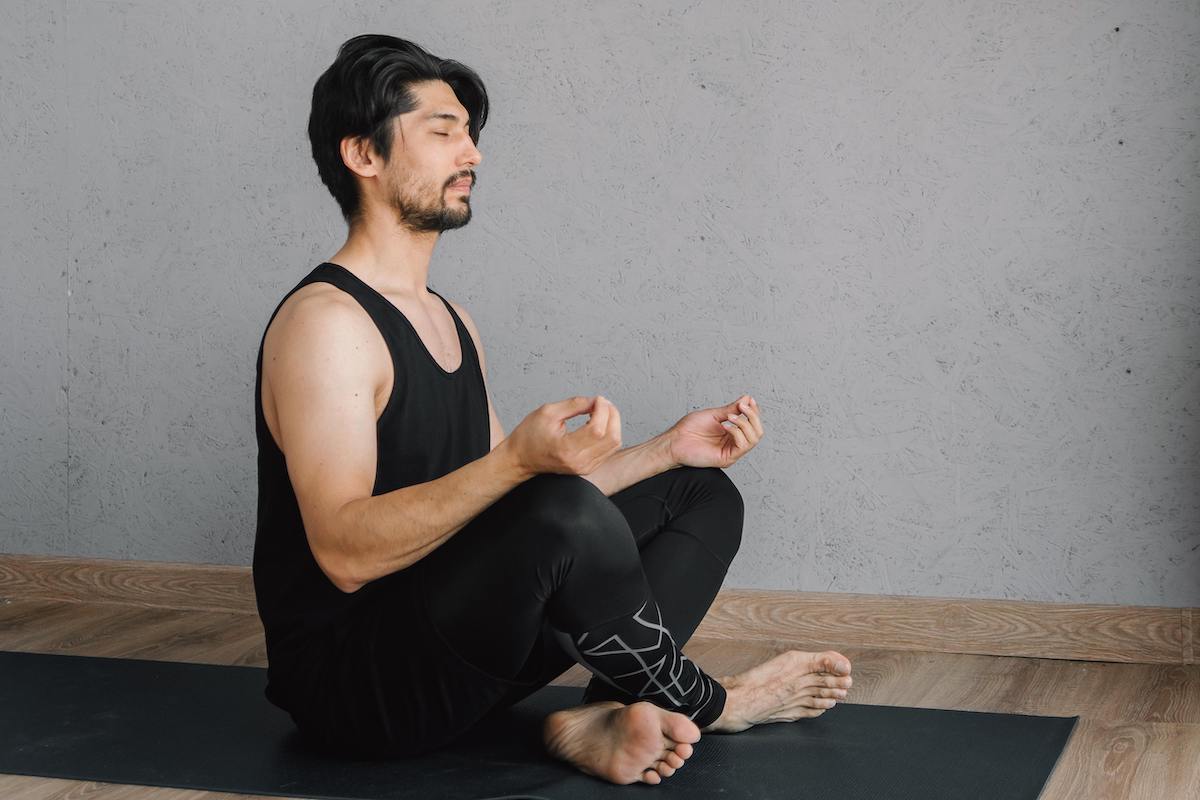If you’ve mastered downward dog and can hang in an extended triangle like a boss, it might be time to incorporate yoga sutras into your yoga practice.
The yoga sutras of Patanjali will do just that – advance your practice and revive it if it’s gone stale. On top of that, these ancient sutras can take your consciousness to the next level.
Of all the benefits they can bring to you, perhaps, living a meaningful and purposeful life is the most significant one.
What Are the Yoga Sutras of Patanjali?
Before we hop into the benefits of incorporating the yoga sutras into your practice, we should explain what they are.
What do the yoga sutras mean?
The yoga sutras are a collection of 196 ancient aphorisms. An Indian sage called Patanjali wrote the yoga sutras in the second century BCE.
Sutras are very powerful. In fact, Deborah King, Author of Mindvalley’s Be A Modern Master Quest, explains that sutras can actually elevate your consciousness between spiritual planes.
And Patanjali’s yoga sutras are no exception.
Believe it or not, his sutras became so famous that Patanjali is now called the father of modern yoga.

How Many Yoga Sutras Are There and What Are the Four Sutras?
There are a total of 196 sutras divided into four groups:
- Samadhi Pada (51 sutras) – These sutras teach reliable, objective, and direct perception. This is the main technique that shows us how to reach Kaivalya, or detachment, by diving into the depths of our minds.
- Sadhana Pada (55 sutras) – Sadhana in Sanskrit means “discipline,” “devotion,” or “practice.” It’s connected to Kriyā Yoga and Ashtanga Yoga.
- Vibhuti Pada (56 sutras) – Vibhuti means “manifestation,” or “power.” It teaches us that some states of mind can be acquired only by practicing yoga.
- Kaivalya Pada (34 sutras) – These refer to the final stage of liberation that one can acquire through Yoga.
What Are the 8 Sutras of Yoga?
Patanjali’s Yoga Sutras contain a description of the eightfold path – guidelines on how to live a meaningful and purposeful life. It’s called ashtanga, and its literal translation means “eight limbs” (ashta=eight, anga=limb).
There are eight sutras or limbs of Yoga:
- Yamas – The moral principles of not harming living beings, truthfulness, non-stealing, sexual restraint, and non-avarice.
- Niyama – Expected habits and behaviors, including purity, clarity of mind, honest speech, and persistence.
- Āsana – The ability to hold steady and at a comfortable position for a length of time.
- Prānāyāma – Made of two Sanskrit words: breath and stretch.
- Pratyāhāra – Retracting the sensory experience from external objects.
- Dhāranā – Meaning, “concentration” and “introspective focus.”
- Dhyāna – Contemplation, reflection, and profound, abstract meditation.
- Samādhi – The ultimate goal: trance, union, and internal cohesion.
Why yoga sutras are the perfect antidote to a stale yoga practice?
In the West, we have a tendency to focus on the physicality of our yoga practice. We want to lunge deeper, balance better, and get stronger.
And while yoga is a physical practice, it is also a spiritual practice. And the spiritual side of yoga is too often left out of our daily practice.
So, that’s where Patanjali’s yoga sutras come in. And they are the perfect antidote to a yoga practice gone stale.

How to Use Yoga Sutras to Enrich Your Practice?
So, how can you begin to incorporate Patanjali’s yoga sutras into your practice? Well, the yoga sutras explore the underlying meaning of yoga. They don’t describe the how — they explore the why.
Many of us already have the how. If you’re practicing yoga on your own or in a group, you’ve learned your fair share of poses. You might even be able to lead your own practice without instruction or guidance.
But have you ever stopped to wonder why a certain pose is structured the way it is? Or why your yoga teacher tells you that savasana (corpse pose) is one of the most important parts of your practice?
That’s what the yoga sutras explore.
And contemplating the yoga sutras both inside and outside your yoga practice can help you deepen your connection, not just with your body but with your mind and spirit as well.
Patanjali’s yoga sutras bring you closer to the core of what yoga is truly about.
5 Yoga Sutras to Enhance Your Yoga Practice
Here are 5 of Patanjali’s yoga sutras to consider the next time you roll out your mat. (Keep in mind that the English translation of these sutras will differ somewhat from their original Sanskrit.)
1.2 “Yoga is the control (nirodhah, regulation, channeling, mastery, integration, coordination, stilling, quieting, setting aside) of the modifications (gross and subtle thought patterns) of the mind field.”
1.6 “The five varieties of thought patterns to witness are: 1) knowing correctly (pramana), 2) incorrect knowing (viparyaya), 3) fantasy or imagination (vikalpa), 4) the object of void-ness that is deep sleep (nidra), and 5) recollection or memory (smriti).”
1.35 “The inner concentration on the process of sensory experiencing, done in a way that leads towards higher, subtle sense perception; this also leads to stability and tranquility of the mind.”
2.1 “Yoga in the form of action (kriya yoga) has three parts: 1) training and purifying the senses (tapas), 2) self-study in the context of teachings (svadhyaya), and 3) devotion and letting go into the creative source from which we emerged (ishvara pranidhana).”
2.29 “The eight rungs, limbs, or steps of Yoga are the codes of self-regulation or restraint (yamas), observances or practices of self-training (niyamas), postures (asana), expansion of breath and prana (pranayama), withdrawal of the senses (pratyahara), concentration (dharana), meditation (dhyana), and perfected concentration (samadhi).”








